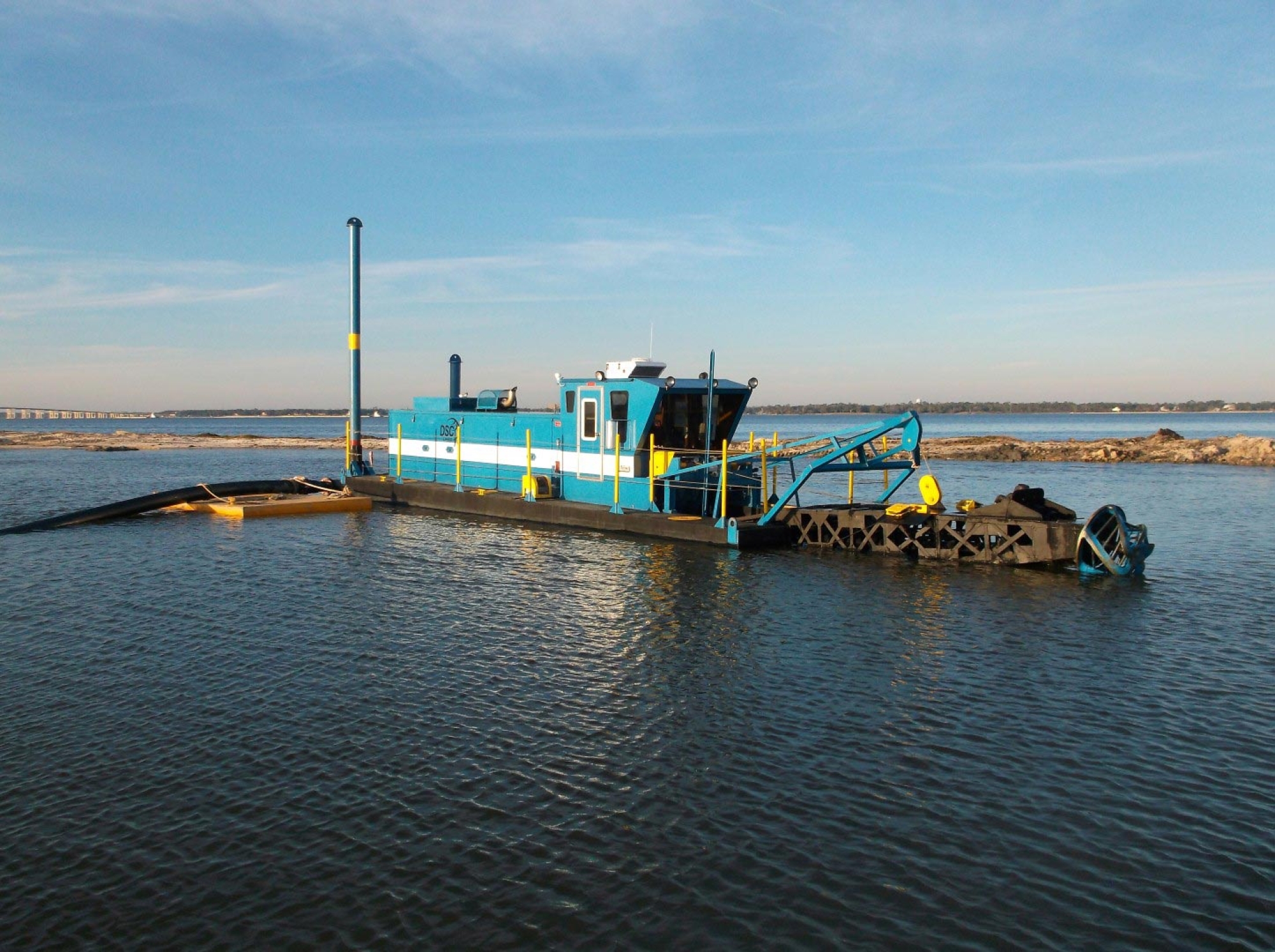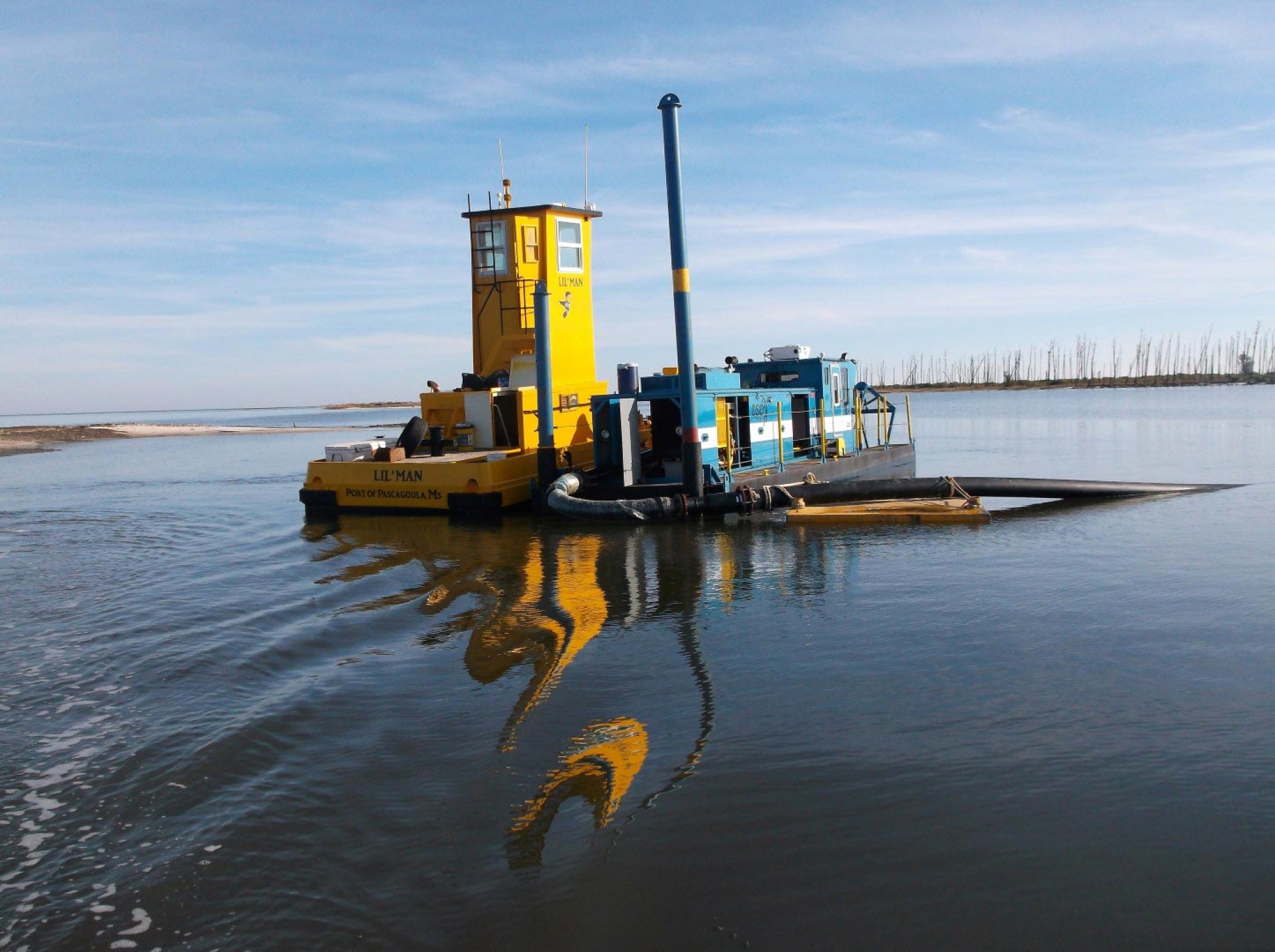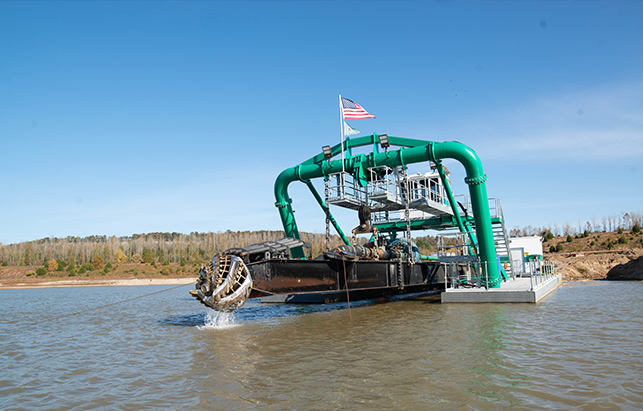The Challenge
Amendments to a project contract required J.E. Borries to seek hydraulic dredging equipment and training in order to perform the job. The company had traditionally performed only mechanical dredging work.
Our Solution
J.E. Borries Inc. is a 22-year-old, family-owned, full-service marine construction and dredging company based on the Mississippi Gulf Coast. The company was awarded a project by the Mississippi Department of Marine Resources to complete the dredging of three bayous in and around Gulfport, Mississippi, in an ongoing reconstruction effort following Hurricane Isaac in 2012, which caused siltation along that section of the Mississippi coast. J.E. Borries had previously completed all of its dredging work by mechanical means, using a long-reach excavator or a clamshell friction crane. However, a change in the plans and specifications for the project necessitated the combined use of both hydraulic and mechanical dredging.
With environmental and other regulatory concerns, in addition to concerns about the very shallow waters of the area, J.E. Borries’ owner, Jason Borries, conducted extensive research on hydraulic dredges. Ultimately, he chose to work with DSC based on the company’s design capability, the Badger dredge’s availability and affordability, and DSC’s customer service and training. The Badger unit was integral in completing the job, along with providing additional opportunities for J.E. Borries’ future dredging endeavors.
Known as the “SUDS” project, the dredging of the Stark, Upper Davis and Simmons bayous included initial mechanical excavation, with the fines being deposited into a 200-cubic-yard shallow-draft barge, which transported the material to Deere Island, a barrier island in close proximity to Gulfport. The material comprises sandy silt with minor amounts of “gumbo” clay (sticky black, gray or green-colored clay) and shells. After reaching Deere Island, the spoils were offloaded into a holding cell and then deepened and turned by the Badger Dredge, which re-excavated the material and then pumped it approximately 2,000 feet away. The dredge depth obtainable to the natural hard sand bottom in the holding cell was 9-feet-plus. By the end of the project, approximately 170,000 cubic yards of material were deposited on the island and used as fill.
The Badger Class 8-inch x 8-inch Cutterhead Dredge is manufactured by DSC at its Greenbush, Michigan, facility. It is ideal for smaller dredging jobs where more compact equipment is required due to work area limitations. With a working width of just under 10 feet and an overall length of 54 feet including the ladder, the Badger Class dredge can be maneuvered by dredging contractors into harder-to-reach waterways not accessible by larger crafts, yet it still can dig to a depth of 20 feet at a 60-degree down angle on the ladder. The lateral cut achieved by the Badger Class dredge at maximum depth is approximately 50 feet. The Badger Class dredge is 9 feet, 2 inches tall and can be transported on a single truckload.








